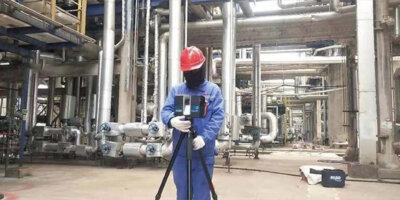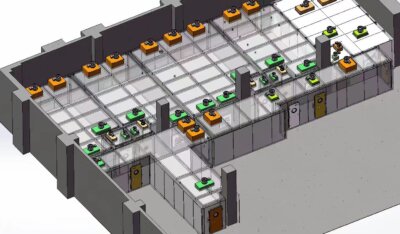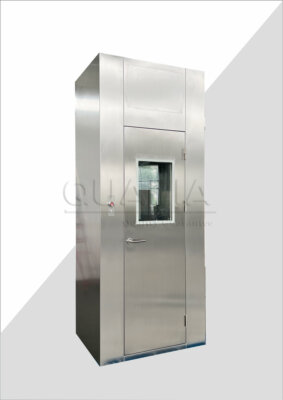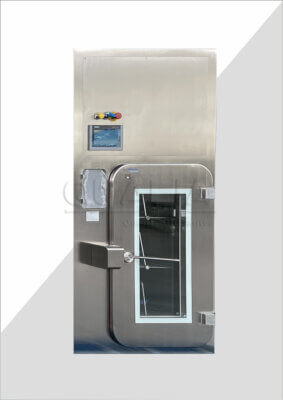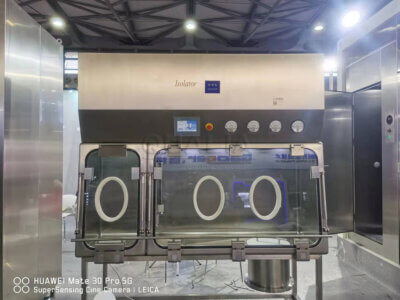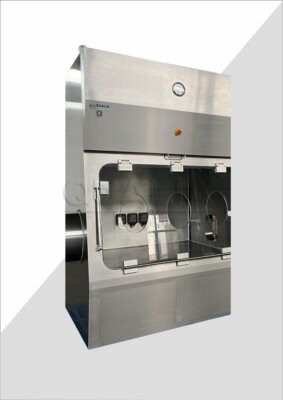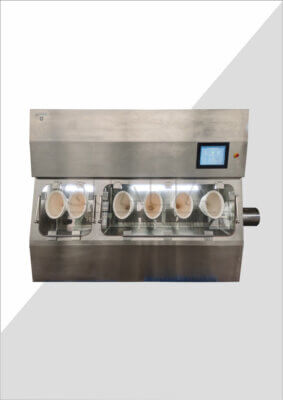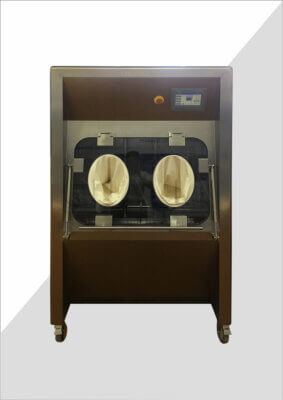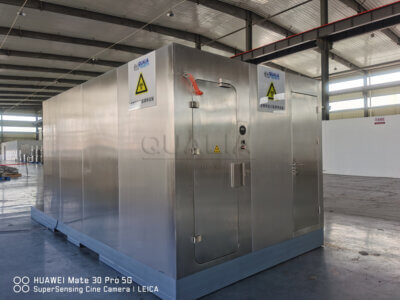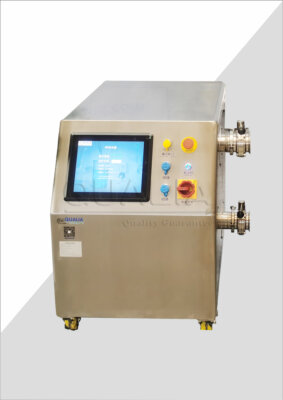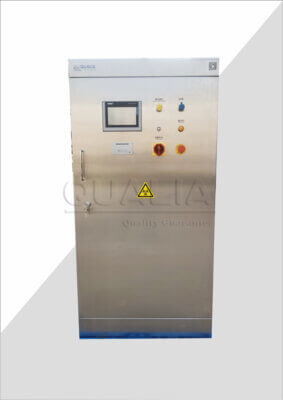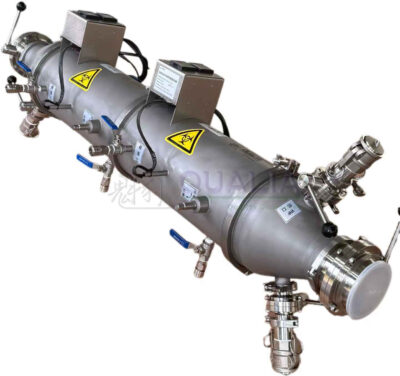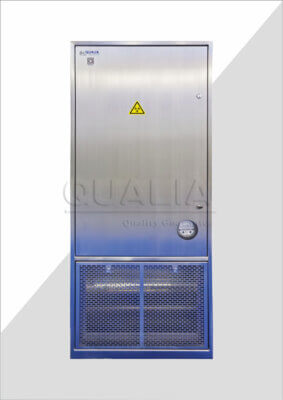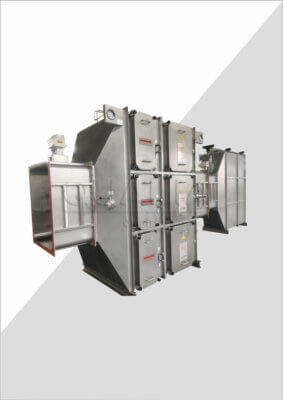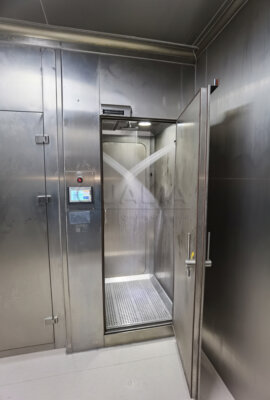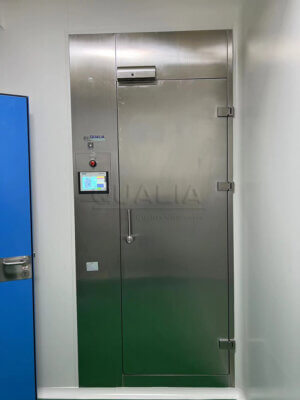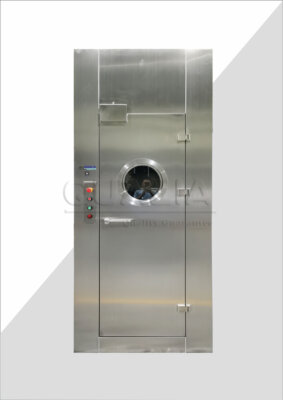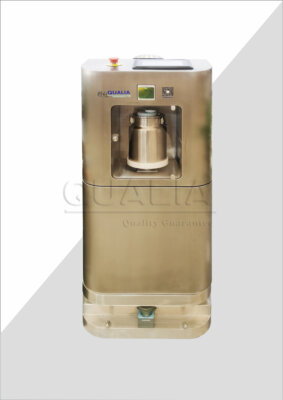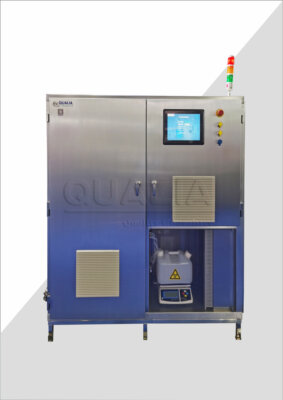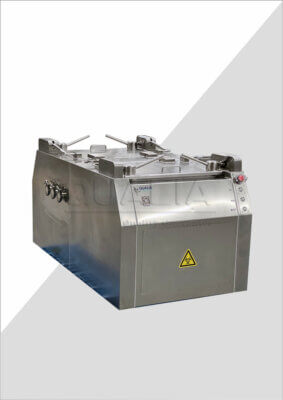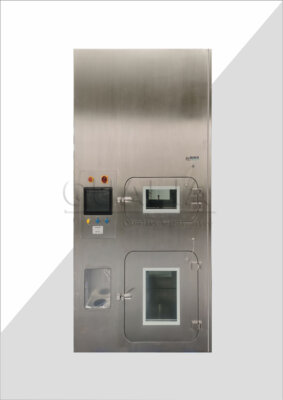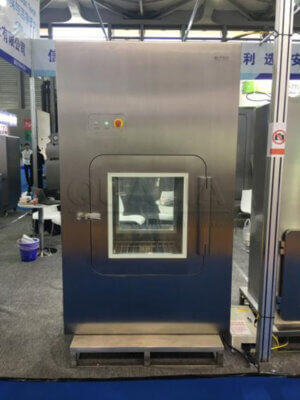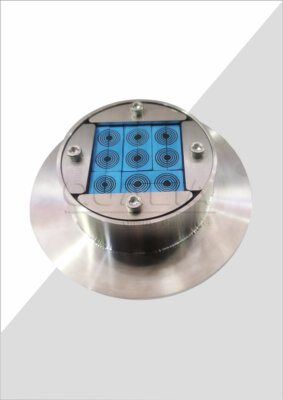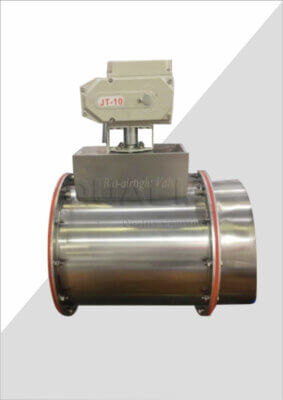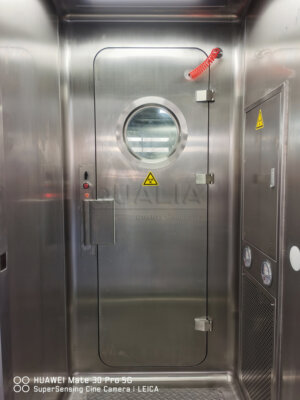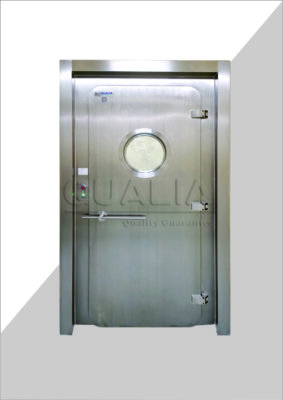In the world of pharmaceutical manufacturing, maintaining sterility and preventing contamination are paramount concerns. As the industry evolves, so do the technologies and methodologies employed to ensure product safety and quality. One such innovation that has gained significant traction in recent years is the implementation of Closed Restricted Access Barrier Systems (Closed RABS). This advanced approach to aseptic processing has revolutionized the way manufacturers handle sensitive products, offering a higher level of contamination control and operational efficiency.
The implementation of Closed RABS represents a significant leap forward in aseptic processing techniques. By creating a physically enclosed, highly controlled environment, these systems minimize the risk of microbial contamination while maximizing product integrity. This article will delve into the best practices for implementing Closed RABS, exploring the key considerations, challenges, and benefits associated with this cutting-edge technology. From system design and installation to operational protocols and regulatory compliance, we'll provide a comprehensive guide for pharmaceutical manufacturers looking to elevate their aseptic processing capabilities.
As we transition into the main content of this article, it's important to recognize that the successful implementation of Closed RABS requires a multifaceted approach. We'll examine the critical factors that contribute to an effective Closed RABS setup, including equipment selection, personnel training, environmental monitoring, and validation procedures. By understanding and applying these best practices, manufacturers can harness the full potential of Closed RABS technology to enhance their production processes and ensure the highest standards of product quality and safety.
Closed Restricted Access Barrier Systems (Closed RABS) represent the gold standard in aseptic processing, offering unparalleled contamination control and operational efficiency for pharmaceutical manufacturers.
| Feature | Open RABS | Closed RABS | Isolators |
|---|---|---|---|
| Barrier Integrity | Moderate | High | Very High |
| Operator Access | Easy | Limited | Very Limited |
| Decontamination Time | Short | Medium | Long |
| Initial Cost | Low | Medium | High |
| Operating Cost | Medium | Medium | Low |
| Flexibility | High | Medium | Low |
| Sterility Assurance Level | Good | Better | Best |
What are the key components of a Closed RABS system?
The foundation of any Closed RABS implementation lies in its core components. These systems are designed to create a physical barrier between the aseptic processing area and the surrounding environment, effectively minimizing the risk of contamination. The key components of a Closed RABS system work in harmony to maintain a sterile environment throughout the manufacturing process.
At the heart of a Closed RABS system is the enclosed chamber, typically constructed from stainless steel and transparent panels. This chamber houses the critical processing equipment and provides a controlled environment for aseptic operations. Integrated glove ports allow operators to manipulate materials and equipment within the chamber without compromising sterility.
Another crucial component is the air handling system, which maintains a positive pressure differential between the enclosed area and the surrounding environment. This system typically includes HEPA filters to ensure that only highly purified air enters the processing area. Additionally, transfer ports and rapid transfer ports (RTPs) facilitate the safe introduction and removal of materials without breaching the sterile barrier.
The success of a Closed RABS system hinges on the seamless integration of its key components, including the enclosed chamber, glove ports, air handling system, and transfer mechanisms, all working together to maintain a sterile processing environment.
| Component | Function | Importance |
|---|---|---|
| Enclosed Chamber | Creates physical barrier | Critical |
| Glove Ports | Allows operator interaction | Essential |
| Air Handling System | Maintains sterile environment | Vital |
| Transfer Ports | Facilitates material transfer | Necessary |
| HEPA Filters | Ensures air purity | Crucial |
How does Closed RABS differ from other aseptic processing methods?
Closed RABS represents a significant advancement in aseptic processing technology, offering distinct advantages over traditional methods and even other barrier systems. Understanding these differences is crucial for manufacturers considering the implementation of Closed RABS in their facilities.
Unlike conventional cleanrooms, Closed RABS provides a physical barrier between the product and the surrounding environment, significantly reducing the risk of contamination. This barrier is more robust than that of open RABS systems, as the doors remain closed during operation, minimizing exposure to the external environment.
When compared to isolators, Closed RABS offers greater flexibility and shorter decontamination times. While isolators provide the highest level of sterility assurance, they often require longer cycle times and more complex decontamination procedures. Closed RABS strikes a balance between sterility assurance and operational efficiency, making it an attractive option for many manufacturers.
Closed RABS systems offer a superior level of contamination control compared to traditional cleanrooms and open RABS, while providing greater operational flexibility than isolators, making them an ideal choice for many aseptic processing applications.
| Feature | Cleanroom | Open RABS | Closed RABS | Isolator |
|---|---|---|---|---|
| Barrier Type | None | Partial | Full | Full |
| Operator Intervention | High | Medium | Low | Very Low |
| Decontamination Time | N/A | Short | Medium | Long |
| Flexibility | High | Medium | Medium | Low |
| Sterility Assurance | Low | Medium | High | Very High |
What are the key considerations for designing a Closed RABS layout?
Designing an effective Closed RABS layout requires careful consideration of various factors to ensure optimal performance and regulatory compliance. The layout must not only accommodate the necessary equipment and processes but also facilitate efficient operator movement and material flow while maintaining the integrity of the sterile environment.
One of the primary considerations is the integration of the Closed RABS with existing or new production lines. The layout should allow for seamless material transfer and equipment operation while minimizing the risk of contamination. This often involves strategic placement of transfer ports, glove ports, and viewing panels to enable operators to perform necessary tasks without compromising sterility.
Ergonomics plays a crucial role in layout design, as operators must be able to comfortably and safely perform their duties within the constraints of the closed system. This includes considerations such as the height and positioning of glove ports, the visibility of critical process areas, and the accessibility of equipment for maintenance and cleaning.
A well-designed Closed RABS layout should prioritize contamination control, operational efficiency, and ergonomic considerations to create a system that not only meets regulatory requirements but also enhances productivity and reduces the risk of operator error.
| Design Element | Purpose | Impact on Performance |
|---|---|---|
| Glove Port Placement | Operator Access | Critical for Efficiency |
| Transfer Port Location | Material Flow | Affects Contamination Risk |
| Viewing Panel Design | Process Visibility | Influences Operator Accuracy |
| Equipment Integration | Process Compatibility | Determines Overall Effectiveness |
| Airflow Management | Sterility Maintenance | Crucial for Contamination Control |
What are the best practices for maintaining sterility in a Closed RABS environment?
Maintaining sterility is the paramount concern in any aseptic processing environment, and Closed RABS systems are designed to excel in this regard. However, the effectiveness of these systems relies heavily on the implementation of rigorous best practices throughout the manufacturing process.
One of the fundamental best practices is the strict adherence to aseptic technique. This includes proper gowning procedures, meticulous cleaning and sanitization protocols, and careful management of material and personnel flow. Operators must be thoroughly trained in these techniques and their importance in maintaining the sterile barrier.
Regular environmental monitoring is essential to ensure the ongoing effectiveness of the Closed RABS system. This typically involves particle counting, microbial sampling, and periodic integrity testing of gloves and seals. Any deviations from established parameters must be promptly investigated and addressed to maintain the system's sterility assurance level.
Maintaining sterility in a Closed RABS environment requires a combination of advanced technology, stringent protocols, and unwavering commitment to aseptic practices from all personnel involved in the manufacturing process.
| Best Practice | Frequency | Impact on Sterility |
|---|---|---|
| Glove Integrity Testing | Daily | Critical |
| Environmental Monitoring | Continuous | High |
| HEPA Filter Certification | Bi-annually | Essential |
| Operator Training | Ongoing | Significant |
| Sanitization Procedures | Per Batch | Crucial |
How does personnel training impact the success of Closed RABS implementation?
The implementation of Closed RABS technology is only as effective as the personnel operating and maintaining the system. Comprehensive and ongoing training is therefore a critical factor in the success of any Closed RABS implementation.
Training programs should cover a wide range of topics, including the principles of aseptic processing, the specific operational procedures of the Closed RABS system, and the importance of maintaining sterility throughout the manufacturing process. Operators must understand not only how to perform their tasks but also why each step is crucial to the overall integrity of the system.
Practical, hands-on training is essential for developing the skills necessary to work effectively within the constraints of a Closed RABS environment. This may include simulations of routine operations, emergency procedures, and troubleshooting scenarios. Regular refresher courses and competency assessments help ensure that all personnel maintain the high level of proficiency required for aseptic processing.
Effective personnel training is the linchpin of successful Closed RABS implementation, ensuring that operators have the knowledge, skills, and mindset necessary to maintain the highest standards of sterility and product quality.
| Training Element | Frequency | Impact on Performance |
|---|---|---|
| Aseptic Technique | Initial + Annual Refresh | Critical |
| System Operation | Initial + Quarterly Review | Essential |
| Emergency Procedures | Bi-annual Drills | Vital |
| GMP Compliance | Ongoing | Significant |
| Documentation Practices | Monthly Audits | Important |
What role does environmental monitoring play in Closed RABS operations?
Environmental monitoring is a cornerstone of Closed RABS operations, providing crucial data on the system's performance and the maintenance of sterile conditions. A robust environmental monitoring program is essential for detecting potential contamination risks and ensuring compliance with regulatory standards.
The monitoring program typically encompasses several key areas, including air quality, surface contamination, and personnel monitoring. Air sampling is conducted to measure particle counts and detect any microbial contamination within the Closed RABS environment. Surface sampling helps identify any potential bioburden on critical surfaces, while personnel monitoring ensures that operators are not introducing contaminants into the system.
Data from environmental monitoring activities must be meticulously recorded, analyzed, and acted upon. Trend analysis can reveal subtle changes in environmental conditions that may indicate potential issues before they become critical. This proactive approach allows manufacturers to address concerns promptly and maintain the highest levels of sterility assurance.
A comprehensive environmental monitoring program serves as the eyes and ears of Closed RABS operations, providing vital insights into the system's performance and enabling manufacturers to maintain a state of constant vigilance against contamination risks.
| Monitoring Type | Frequency | Key Parameters |
|---|---|---|
| Air Sampling | Continuous | Particle Count, Microbial CFUs |
| Surface Sampling | Per Batch | Bioburden Levels |
| Personnel Monitoring | Daily | Microbial Contamination |
| Pressure Differential | Continuous | Air Flow Direction |
| Temperature/Humidity | Continuous | Environmental Stability |
How can manufacturers ensure regulatory compliance when implementing Closed RABS?
Ensuring regulatory compliance is a critical aspect of implementing Closed RABS technology in pharmaceutical manufacturing. As regulatory bodies worldwide continue to raise the bar for aseptic processing standards, manufacturers must stay ahead of the curve to maintain compliance and secure approvals for their products.
The first step in ensuring compliance is to thoroughly understand the relevant regulations and guidelines. This includes not only general Good Manufacturing Practice (GMP) requirements but also specific guidance documents related to aseptic processing and barrier systems. Manufacturers should work closely with regulatory experts to interpret these requirements and develop strategies for meeting or exceeding them.
Documentation plays a crucial role in demonstrating compliance. This includes detailed Standard Operating Procedures (SOPs), validation protocols, environmental monitoring records, and training documentation. QUALIA offers comprehensive solutions for Closed RABS implementation, including support for regulatory compliance and documentation.
Regulatory compliance in Closed RABS implementation requires a proactive approach, combining thorough understanding of regulatory requirements, meticulous documentation, and ongoing communication with regulatory bodies to ensure that all aspects of the system meet or exceed current standards.
| Regulatory Aspect | Key Considerations | Impact on Compliance |
|---|---|---|
| Validation Protocols | Comprehensiveness | Critical |
| SOP Documentation | Clarity and Detail | Essential |
| Change Control | Rigorous Process | Significant |
| Audit Readiness | Ongoing Preparation | Important |
| Regulatory Updates | Continuous Monitoring | Crucial |
What future developments can we expect in Closed RABS technology?
As the pharmaceutical industry continues to evolve, so too does the technology supporting aseptic processing. The future of Closed RABS technology promises exciting developments that will further enhance sterility assurance, operational efficiency, and regulatory compliance.
One area of focus is the integration of advanced automation and robotics within Closed RABS systems. This could include the development of more sophisticated transfer mechanisms, automated cleaning and sanitization processes, and even AI-driven environmental monitoring systems. These advancements have the potential to reduce human intervention, further minimizing contamination risks and improving consistency in manufacturing processes.
Another trend is the development of more flexible and modular Closed RABS designs. These systems would allow manufacturers to more easily adapt their production lines to different products or batch sizes, enhancing overall operational agility. Additionally, we can expect to see improvements in materials and design that will make Closed RABS systems even more robust and easier to maintain.
The future of Closed RABS technology is likely to be characterized by increased automation, greater flexibility, and enhanced integration with digital systems, further solidifying its position as a cornerstone of modern aseptic processing.
| Future Development | Potential Impact | Timeline |
|---|---|---|
| Advanced Robotics | High | 3-5 Years |
| AI-Driven Monitoring | Significant | 2-4 Years |
| Modular Designs | Moderate | 1-3 Years |
| Improved Materials | Incremental | Ongoing |
| Digital Twin Integration | High | 3-5 Years |
In conclusion, the implementation of Closed RABS represents a significant advancement in aseptic processing technology, offering pharmaceutical manufacturers a powerful tool for ensuring product sterility and quality. By adhering to best practices in system design, personnel training, environmental monitoring, and regulatory compliance, companies can harness the full potential of Closed RABS to enhance their production processes and meet the ever-increasing demands of the industry.
The success of Closed RABS implementation hinges on a holistic approach that considers not only the technical aspects of the system but also the human factors and operational considerations. As we've explored throughout this article, every aspect of Closed RABS operation, from initial design to ongoing maintenance and monitoring, plays a crucial role in maintaining the integrity of the aseptic environment.
As the pharmaceutical industry continues to evolve, Closed RABS technology will undoubtedly play an increasingly important role in aseptic processing. The future developments we can anticipate, such as increased automation and more flexible designs, promise to further enhance the capabilities of these systems. Manufacturers who embrace these technologies and commit to continuous improvement in their aseptic processing practices will be well-positioned to meet the challenges of producing high-quality, sterile pharmaceutical products in the years to come.
External Resources
Best Practices for Restricted Access Barrier Systems – This article from BioPharm International discusses the best practices for implementing RABS, including the importance of no open-door interventions, high-level disinfection, and thorough mock-up studies to ensure operator access through glove portals.
Legacy Filling Lines Evolve Safeguarding with RABS Technology – This article from the Parenteral Drug Association (PDA) outlines the role of RABS in mitigating contamination risks and ensuring compliance with regulatory standards. It includes details on protocols, training, and documentation necessary for RABS implementation.
Best Practices for Restricted Access Barrier Systems in Aseptic Manufacturing – This piece from PharmTech provides a detailed look at the best practices for operating a RABS cleanroom, including the use of glove-portal systems, high-level disinfection, and aseptic transfer systems to maintain sterility.
The Ins And Outs Of Modern Barrier Systems For Sterile Manufacturing – This article from BioProcess Online compares different types of RABS (active, passive, and closed) and discusses their applications, including the importance of maintaining air quality and minimizing door openings.
RABS: Restricted Access Barrier Systems for Aseptic Processing in Pharmaceutical Products – Comecer's resource explains the features and benefits of RABS and Closed RABS (C-RABS), focusing on how these systems provide a controlled environment with high protection against contamination.
Implementing RABS in Aseptic Filling Operations – Although not exclusively titled "Closed RABS," this PDA resource is crucial as it details the implementation of RABS, including setup activities, training, and the necessity of strict adherence to protocols, all of which are relevant to closed RABS.
Related Contents:
- Regulatory Compliance and Closed RABS in Pharmaceutical Production
- Unveiling the Best RABS for Your Facility
- Maintaining Sterility: The Critical Role of Closed RABS in Pharmaceutical Production
- Revolutionizing Pharmaceutical Manufacturing with Closed RABS
- Designing Effective Closed RABS for Sterile Drug Manufacturing
- Closed RABS vs. Isolators: Comparing Aseptic Processing Solutions
- Enhancing Pharmaceutical Production with Closed RABS
- Environmental Defense: Safeguarding Our Planet from Contamination
- Navigating Regulatory Waters: Effluent Treatment in Biopharma


